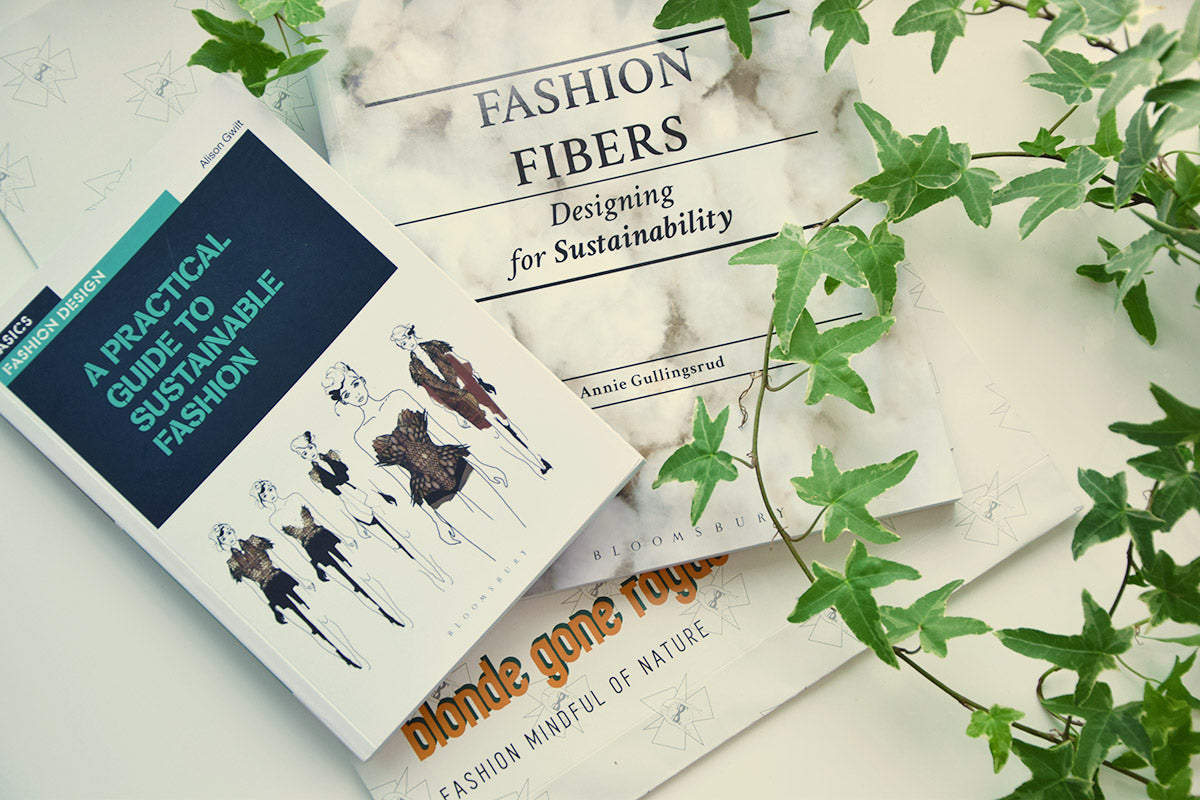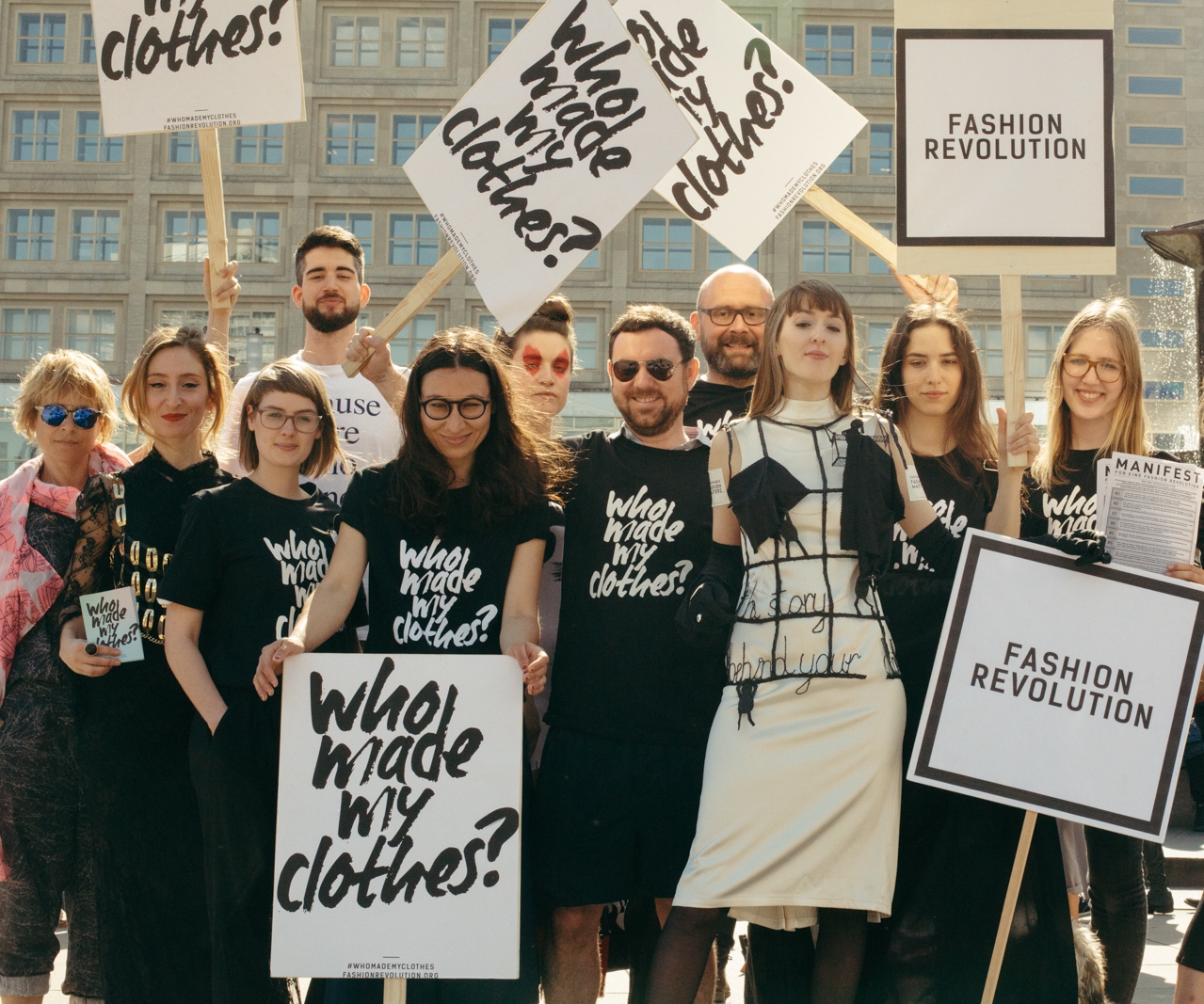Sustainable Fashion: A Beginner's Guide
April 21 2020 – Gergana Damyanova

Hi there! Cool to see you land on our blog!
This is a short article on sustainable fashion. We'll cover quickly the main environmental and ethical issues in the industry, the importance of addressing them and how both brands and customers can act to change things. If you're looking for something more detailed, head over to Sustainable Fashion: A Comprehensive Guide.
What is the real size of the fashion industry?
Fashion is one of the world's biggest industries with sales last year of £1.1 trillion and over 50 million people working in the clothing sector.
It's fair to say that fashion is massive and as it happens with many industries, once things get massive, a lot of ethical and environmental issues start to appear.

The biggest wrongdoings of fashion
The are two main categories of issues in the industry - ethical and environmental.
Looking first at the ethical side of things - a lot has been written in the past decade about working conditions and fair pay. A lot of rule breakers have been called out as well - H&M, Gap and Uniqlo to name a few.
Maybe that has moved the needle but it has definitely not gotten us all the way there. Still today fast fashion companies refuse to pay factories and operate in countries where workers are prosecuted for striking. As an example, the Fair Labour Association reported that the average garment worker in Bangladesh in 2018 would need an 80% pay raise in order to earn the most conservative living pay. Similar situations occur in many other countries and even much closer to home - here in the UK as well. The House of Commons has continuously reported and gone after unethical and unlawful practices by fast fashion companies - summarised in this report.
There are five categories that we have found the most important and most concerning when it comes to the environmental impact of the industry:
Water usage
A single pair of jeans consumers 9,000 litres - the same amount a person drinks in 12 years! How does this happen? The truth is that cotton is a thirsty crop, so it needs a lot of water to grow. And then the dyeing process amplifies the water consumption, which as well leads us to:
Water pollution
20% of global's water pollution is from textile dyeing and other treatments. This ranks the textile industry the second largest polluter of clean water.
Pesticides
Бelieve it or not, fashion is competing with agriculture when it comes to pesticides. More pesticides are used in the production of cotton than any other crop. These chemical products poison the soil, leaving it useless for growing other crops, and the field workers who spread the chemicals.
Air pollution
Air pollution is another element impacted by the industry. Synthetic fibres, e.g. polyester, make for 60% of global fibre demand. In their production nitrous oxide is released in the atmosphere - a gas 300 times more poisonous than CO2.
Waste
Every garment in the UK is worn on average 7 times before disposal. So after all the resources that have gone into the production of our clothes, we tend to dispose of them way too quickly! This results in the fact that every second the equivalent of 1 garbage truck of clothes is disposed of. In the UK alone, every year 1 million tonnes of textile end up in landfills.
Ouch! Tough statistics, no? But there's a lot we can do to change the situation!
How can brands create a more sustainable industry?
Brands have a lot of power here. After running a sustainable fashion brand for three years, I have learnt that everything can be done in a sustainable, cost-efficient way. It just takes a bit of time to find a proper solution! Here are the practices that we have adopted for now - they are not the end but are definitely a strong beginning.
End-of-roll materials
End-of-roll or deadstock materials are factory surplus materials that are usually thrown away. However, they are not offcuts but usually whole rolls of perfectly good fabric that goes to waste! Making sure that these materials don't go to waste is one of the most sustainable ways to create new clothing - after all, everything is just there, waiting to be cut and put together.
Kind materials
A sustainable alternative to end-of-roll materials is using fabrics that are kind to nature - for instance organic and recycled cotton, linen, cupro and tencel. They use less resources to be made.
High quality
Quality must always be top priority. Our motto is - buy less, buy better and wear longer. The most sustainable product is the one that can be worn for years, thus eliminating the constant cycle of production and disposal that is so damaging to the environment.
Transparency
Transparency is so, so important! Ask your favourite brands everything you ever wondered about! Truly sustainable companies are very transparent about their operations, making it easy to verify their credentials.
An example of such visibility is The Blonde Chain - our supply chain transparency tool. Still in beta version, The Blonde Chain is meant to show you who made the clothes in our store.
How can customers act to improve the fashion industry?
Individual consumers have a lot of power about what is happening in the industry. Where companies don't want to step up, you and I can definitely push them to do so. Everyone votes with the money they spend. A purchase from a transparent, sustainable brand is a vote for sustainable fashion; a purchase from a fast fashion company is a vote for different practices.
That's the power of consumers and is not a power to be overlooked. But we need to demand real, fundamental change and not settle for marketing campaigns including the word 'sustainable'. We need to go deep and as the right questions to drive the right change.
You can talk to your favourite brands on Twitter or Instagram - they will reply! Ask about suppliers, factories and practices. For the first time ever, we can easily connect to our favourite brands. And we can as well reward the ones that match our moral values by sharing with our friends what we have found out!

My favourite questions to brands are below, I am sure they are a good start for you, too:
• Where do you get your supplies from?
Brands that are willing to name their sources are more likely to be operating an ethical supply chain.
• Where do you produce?
Brands that produce close to their headquarters and to the communities of their biggest customers are more likely to be paying fair wages and offering good working conditions.
• How can I learn more about the sustainability level of your operations?
Practically every company now has a sustainability page on their website. The depth and detail of this page speaks a lot about whether brands are committed to their goals or whether they are just trying to check a box.
How to differentiate the real sustainable brands from the sham ones?
Ask. Just ask. Companies that have made sustainability their objective will pour a ton of information on you - because they are passionate about it and everyone loves talking about their passion! Beware scarcity of details - that's where the greenwashing companies come into play.
Alternatively you can find an organisation that vets companies. Two of my top picks to go to are:
• Good on You uses publicly available information to rank the sustainable operations of thousands of brands. It's a wonderful spot to discover new sustainable brands.
• Fashion Revolution publishes a Fashion Transparency Index every year - this is a good spot to see how the bigger players are doing in terms of sustainability and transparency.
Curious to learn more? Check out a more detailed view on Sustainable Fashion: A Comprehensive Guide.


0 comments